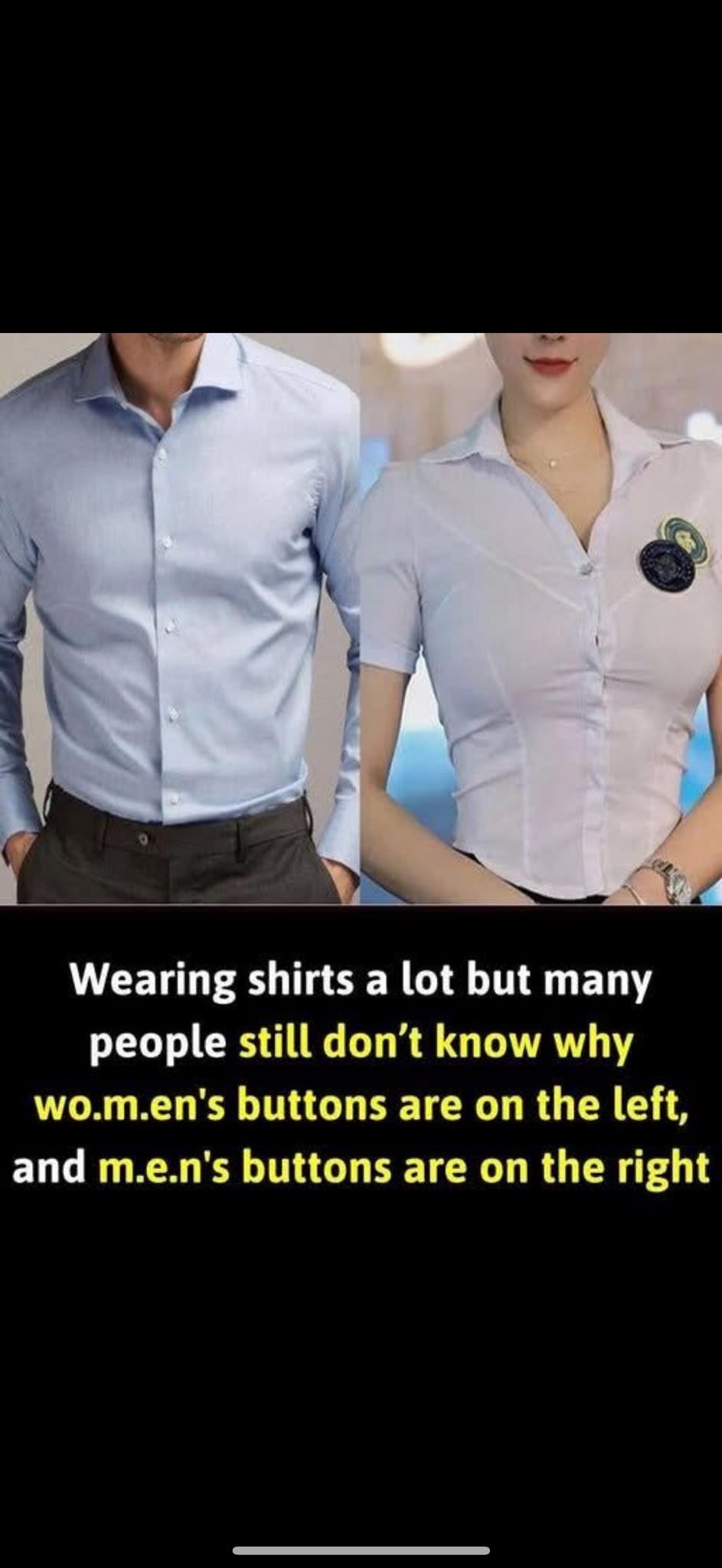Fashion trends have become increasingly fluid, with traditional distinctions between men’s and women’s clothing often blurring. However, one subtle detail continues to differentiate them: the placement of buttons. Typically, men’s shirts have buttons on the right side, while women’s are on the left. This seemingly minor difference has deep historical roots, with several theories attempting to explain its origin.

Assistance in Dressing
A widely accepted theory traces back to times when affluent women had maids to assist them in dressing. Given that most people are right-handed, placing buttons on the left side of women’s garments made it easier for right-handed maids to fasten them.
Military Influence
For men, the button placement may have been influenced by military needs. Historically, men often carried weapons like swords on their left side to be drawn with the right hand. Having buttons on the right side of their garments prevented the weapon from catching in the jacket opening during a draw, facilitating quicker access.
Differentiation in Fashion
Another perspective suggests that as women’s fashion began incorporating more masculine elements in the 19th century, distinguishing features like opposite buttoning were introduced to maintain clear gender distinctions in clothing.
Functional Considerations
Additional theories propose practical reasons for this button placement. For instance, women traditionally rode horses sidesaddle, facing the left side of the horse. Buttoning from right to left could have reduced the breeze entering their garments during rides. Another idea is that women often held babies with their left arm, leaving the right hand free to unbutton their clothing for breastfeeding, making left-sided buttons more convenient.
Symbol of Status
The button placement also served as a subtle indicator of social status. In an era when buttons were expensive and considered a luxury, the way they were positioned on clothing could reflect one’s wealth and class.
Modern Implications
Today, while the practical reasons for these button placements have faded, the tradition persists. Many clothing manufacturers continue to design garments with this historical button orientation, more out of convention than necessity. Some brands, however, are challenging these norms, offering unisex clothing with standardized button placements.
This enduring detail in fashion serves as a reminder of how historical practices and societal structures can influence even the smallest aspects of our daily lives.





